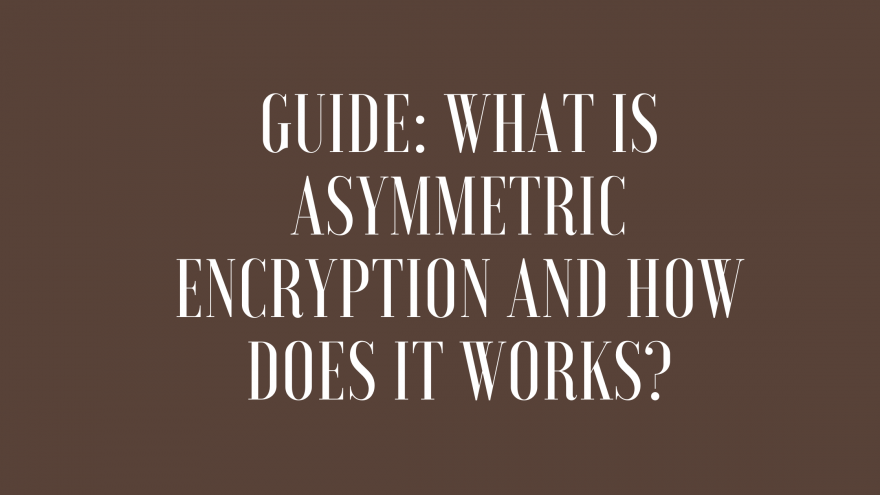Asymmetric is one of the regularly utilized types of encryption and is additionally one of the most notable. In this article, the readers will learn how to define asymmetric encryption and will be given many asymmetric encryption instances to consider. As the name implies, the private key is intended to be kept secret so that the receiver of the key may only use it to decode the data that has been encrypted with it.
The concept of asymmetric encryption and the notion of symmetric encryption are opposed. In contrast to conventional symmetric encryption, asymmetric encryption encrypts and then decrypts the raw data using distinct but mathematically linked keys in the first instance. These keys are frequently mentioned to as public keys and private keys sets when utilized together.
To better grasp how asymmetric encryption works, it is helpful to consider an example first. According to your most recent resume, you are the head of a spy agency. You are responsible for decoding a system for your spy operatives so that information may be relayed safely. No two-way contact is required; all you need is to get detailed reports regularly from them, which they will provide to you. Symmetric encryption may be very beneficial in this situation since it can generate a public key that can be shared by all of the spy agents, allowing them to encrypt and decrypt the information.
The Applications of Asymmetric Encryption
Asymmetric encryption is more than simply a theory since the number of applications for asymmetric encryption is enormous. The utilization of stamps of authenticity, digital signatures, and other comparable things is an inevitable component of an association’s security planning.
Signatures and stamps serve as proof and evidence of a document’s identity and origin, and they are used to verify this information. Additionally, digital signatures are a significant component of official activity. This section will provide our readers with a few examples of how asymmetric encryption is used in the real world.
- It is used to maintain secrecy. It is possible to enable the sender to encrypt important data using the public key while simultaneously allowing the recipient to decode the data with the private key when using asymmetric encryption (see below). As a result, asymmetric key encryption and decryption are beneficial in maintaining secrecy.
- Asymmetric encryption, on the other hand, ensures that the information is kept safe and that the information sent is not compromised. This is a significant part of the solution to the question of why asymmetric encryption is helpful.
- When asymmetric encryption is used, the data or information cannot be disowned by the owner of the data or information. As a result, the originator of the transaction cannot deny processing the data and you can probably predict why asymmetric encryption is preferable to symmetric encryption.
Encryption Examples with Asymmetrical Keys
There are many instances of asymmetric encryption. This is something that we come with often in the actual world. When we connect to a website protected by HTTPS, we use the asymmetric essential encryption example technique. We may also exchange emails while maintaining our privacy by utilizing the PGP protocol. Another example of asymmetric encryption methods is the usage of Bitcoin, which makes use of this technique to ensure that the owner of a money wallet may move or withdraw money using the services of the cryptocurrency network.
Follow these Encryption Methods mentioned below:
- Named for Ron Rivest, Adi Shamir, and Len Adleman, inventors of the 1978 algorithm. This is an algorithm that may be used for encryption and thus for data significance. RSA is the most sought-after technique of all other kinds of asymmetric encryption. The asymmetric method of encryption in RSA and document signing may be carried out via different modular multiplications.
- ECC is the elliptical cryptography abbreviation. This is another asymmetric encryption method. ECC is effectively RSA-like. ECC is particularly used on devices like Smartphones that are smaller than mobile phones. The computer power of this method is less required compared to that of RSA. The points on the curve are utilized in this method to define the private and public key pairs.
